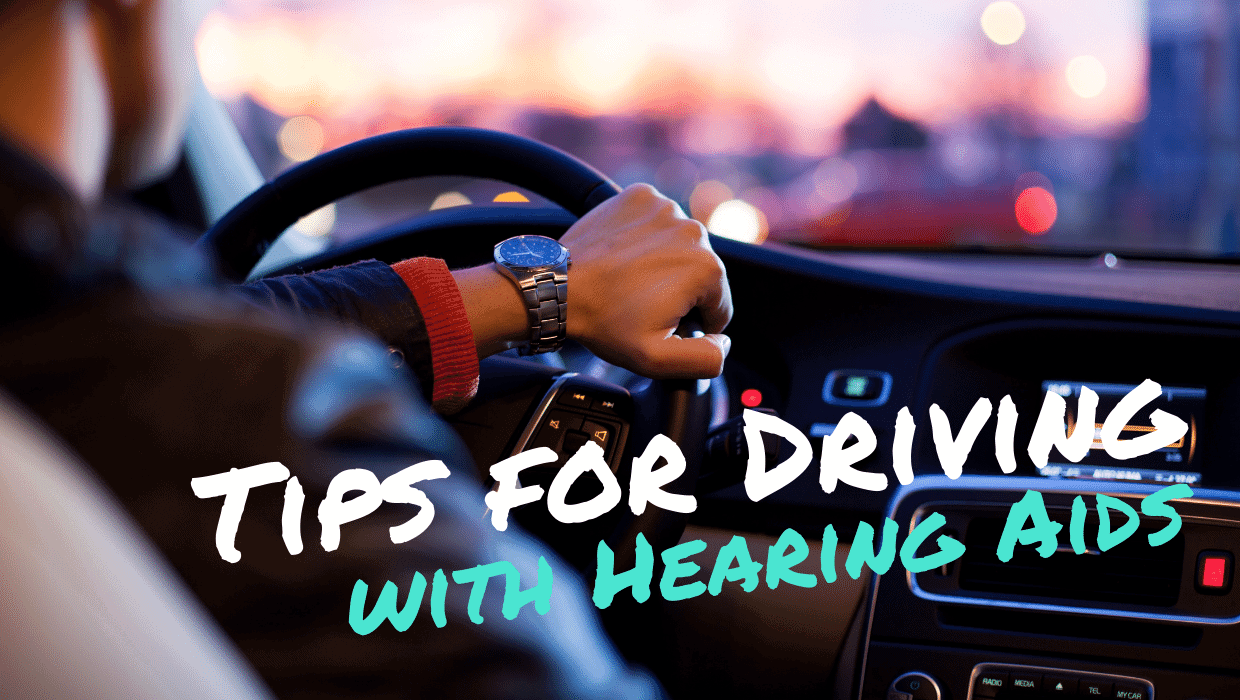For many of the elderly in our communities one of the best ways to remain independent is to drive. However, you could also put yourself or others unnecessarily at risk when driving if you suffer from hearing loss that is not treated.
If you have hearing loss you can continue to drive safely provided you are making full use of your hearing aids that have been professionally fit. It would certainly help if you took a few extra precautions to ensure your safety, the safety of your passengers, and the safety of everyone else on the road.
Here are some valuable tips that will keep you safe when you are on the road.
Advice on driving with hearing aids
1. Take time to get used to driving with hearing aids.
As you know hearing aids are not like eyeglasses; while vision with glasses can become almost 20/20 with the right prescription, when you use hearing aids, hearing is not instantly restored.
It takes a little while to get used to your hearing aids so try using them on easier drives before taking them onto the highway.
Before attempting to drive, it can be useful to get better used to louder sounds around you. For example, before you try driving with them, try to be comfortable wearing hearing aids in different environments including on a walk around your town or city.
Take the time to drive with a friend or family member’s help on a safe, quiet street. An empty parking lot is a perfect way to test your driving while wearing hearing aids. Take note of the wide range of sounds you hear with your hearing aids.
2. Minimize distractions in the car
Multi-tasking should be avoided when driving. That means putting your phone down, keeping the music down, and holding off on engaging in heated discussions with other people in the car until you have reached your destination.
3. Be mindful of your slower reaction times.
As we age, sluggish reaction times can make a big difference in road safety, and even a split second can mean the difference between a close call and an accident. You will need to make adjustments to how you drive and leave an additional second of processing time for yourself. Try not to tailgate the car in front of you, and as you reach a red light, start slowing down much earlier. Look as far ahead as possible and check the road for any possible issues that could occur.
4. Keep on top of car maintenance.
It would be best if you visited your car mechanic regularly while you’re driving with hearing loss. You may miss the soft alarm sounds from the dashboard even with your hearing aids, or you may not hear the rattling under the hood. If soft sounds can’t be heard, you could have a much bigger problem on your hands.
5. Tailor your car to match your needs
Consider the effects of traveling long distances con your body. To mitigate the chance of aggravating any physical issues, adjust your seats and mirrors to optimize ergonomic comfort.
You can also substitute side mirrors for larger mirrors. Ask your garage if they can add advanced braking equipment to assist you when slowing down or speeding up. This could increase the ease of your driving experience and make you less vulnerable to accidents.
Get your hearing tested regularly.
For safe driving, good hearing is essential. Every year, we suggest that you test your hearing to ensure you hear the traffic sounds, horns, kids playing, and warning sirens that happen on the road around you. At The Hearing Health Center of Houston, we suggest that individuals with hearing aids take an annual hearing test to ensure their hearing aids are suitably programmed to their needs.
You will find that driving with hearing aids is no challenge at all with proper planning, adequate practice, and adherence to safety standards. This will help to keep your, your loved ones, and strangers out of harm’s way.


